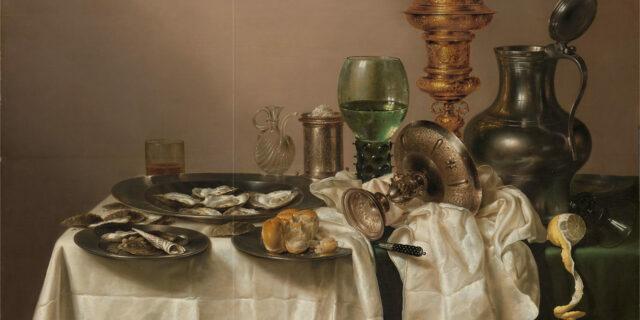They stoked stoves and wrapped herring: what was the use of books at different times
Miscellaneous / / July 06, 2023
You will not find the “just read” option here.
«The book is an illusion” is a study by bibliologist Yulia Shcherbinina, dedicated to unusual practices in handling publications. The author is trying to figure out how a person learned to appreciate in a book not so much its content as its outer shell. With the permission of Alpina Non-Fiction, we publish an excerpt from Chapter 10 on the use of volumes for utilitarian purposes.
Cloacine victims
[…] The use of books not for their intended purpose, outside of actual reading, has been practiced since ancient times. The most famous phenomenon is the medieval palimpsests (gr. palipmpseston - lit. "newly scraped off"): manuscripts on parchment, cleaned of previously written texts. The creation of palimpsests was explained primarily by the shortage of writing materials and the need for austerity. This is a bizarre synthesis of destruction and restoration, destruction and creation, neglect of the book and respect for it.
Later, ancient manuscripts were often used as consumables for bindings.
early printed books. Then scattered sheets of crumbling editions began to be taken for the restoration of dilapidated volumes. Unnecessary volumes were turned into library coasters and holders: a paper block was removed from the binding and the resulting box was filled with sand for weight. Now such coasters are called bookends - eng. book end, lit. "The end of the book series." Unscrupulous collectors often restored defective copies by cynically tearing pages from other books, and maliciously mutilated volumes to drive down the auction price.Sometimes misuse of the book was due to a lack of understanding of its true value and cultural significance.
The English bishop and bibliophile Richard de Bury in his famous treatise Philobiblon (c. 1345) denounced uncultured contemporaries who mutilated folios, cutting margins from the pages and using them as writing material. In 1854, they discovered in Egypt mummy, stuffed with papyrus with poems by the ancient Greek poet Alkman. I wonder if the embalmer knew about this? And what did the ancient Egyptian god Thoth, the patron saint of libraries, think?
With the spread of printing, manuscripts depreciated and were increasingly perceived as material for secondary use. Why good should disappear? Wooden covers, leather covers, metal clasps, fabric ribbons in the spines - everything had a use. One 14th-century pundit, playing shuttlecock, suddenly discovered that the racket was pasted over with fragments of the work of the ancient historian Titus Livius. As it turned out later, the entire precious manuscript went to the manufacture of rackets.
Relatively recently found artifacts include a miter dated around 1270. bishop on a substrate of four fragments of a manuscript of the Norwegian translation of an old French love lyrics. Imagine a priest preaching with such a thing on his head! No less impressive is the waistcoat base, carved from the parchment of an Icelandic manuscript book, and the lining of a Cistercian dress. nuns from the parchment of a Latin manuscript (1375–1400). A dense layer of fabric was glued on top, so that these masterpieces of tailoring were discovered only today.
Another prerequisite for the misuse of books was political and religious conflicts.
Thus, the Reformation, which is officially called the triumph of the book, led to the transformation of many "disgraced" manuscripts into objects of mockery, and then into piles of garbage. The antiquarian John Leyland, "the father of English national history and bibliography", indignantly described how the detractors of church dogmas with clippings from ancient manuscripts, they clean their shoes and make candlesticks out of them, which they then sell grocers.
The fate of the monastery libraries plundered during the rebellious period of the French revolution 1789. The leather and paper of the most valuable volumes were used to kindle stoves, clean candlesticks, pack pies and sausages, smooth gloves, paste over chests, and repair window frames. And also for the manufacture of cigarettes, tea boxes, wads for cartridges, tailor's measuring tapes and patterns. This barbaric custom was figuratively called "book life".
Finally, the attitude to books as recyclables was explained by the very specifics of their production.
Until the second half of the 19th century, most reading materials were made from old rags and then recycled. Similarly, they altered and turned over old clothes. Having started its journey with rags, the book again turned into recyclable material when it became unusable or unnecessary. Her life was subject to the technological cycle of production and recycling of paper.
For the same reason in philosophical treatises and journalistic essays, the value of texts was often put in direct proportion to the cost of printed material: “Is the book worthy of its paper?” AND on the contrary: the mention of the amount of mutton fat that paper can absorb served as an allegorical statement of the futility of what was printed on it. works. In the bag of a London scavenger, one could find tomes moldy from improper storage, imposed by missionary pocket Bibles, tattered songbooks and didactic pamphlets published at the expense of graphomaniac authors essays. Halfpenny for a wheelbarrow of waste paper! Copies that were not sold out in time were sold by weight as wrapping and wallpaper paper.
Such a fate befell in 1808 237 out of 300 copies of the complete Russian translation of the surviving parts of the work of Diodorus Siculus published in 1775. After the death in 1845 of one of the first Russian bibliographers, Vasily Anastasevich, his bibliographic treasures were also dumped in bags and sent to a barn, where they rotted for two decades, after which they were auctioned off at 30 kopecks per pood as wallpaper. Only hard-working painters came to the auction, bibliophiles did not know anything about him. The bags contained the rarest early printed editions, only a few volumes were saved ...
At the same time, the servants, who did not distinguish the philosopher Bacon from the appetizing bacon, often had a much better understanding of the consumer and exchange value of paper of various weights and textures, knew the hygroscopic and refractory properties of its various grades, therefore unmistakably adapted the pages of one book as window napkins, another as baking bags, a third for kindling fireplaces. As long as the prim gentleman indulged in literary meditation in the quiet of his office, his diligent cook deftly credited junk volumes for household needs.
However, the utilitarian use of books was also characteristic of highly educated people.
So, the English Earl of Chesterfield in one of the letters carefully lectured son: “I knew a man who was so careful about his time that he did not want to lose even those short minutes that he he had to spend for the administration of natural needs: in these minutes he managed to re-read all the Latin poets. He bought some cheap edition Horace, tore out two pages from it and took it with him to the closet, where he first read them, and then he sacrificed Cloacine, "He saved a lot of time by doing this, and I recommend that you follow his example."
Some examples of this kind have become historical anecdotes. The Rev. Alfred Hackman (1811-1874) worked for thirty-six years as a sublibrarian at the Bodleian Library, using an antique tome as... a cushion for the comfort of his chair. When Hackman left his post, it turned out that the printed catalog he compiled did not include the same ill-fated volume that also existed in a single copy. What the eye does not see, as it were, does not exist. […]
shoe bible
The use of books for utilitarian purposes is quite widely displayed in art. […]

1 / 0
Willem Claesz Heda. Still life with a gilded goblet. 1635. Oil on wood / Rijksmuseum, Amsterdam

2 / 0
Willem Claesz Heda. Still life with a gilded goblet (detail). 1635. Oil on wood / Rijksmuseum, Amsterdam
In the baroque Dutch still lifes ontbijtjes (“breakfasts”), a page torn from an almanac and folded into a bag becomes an exquisite decoration of a dish with oysters. In art descriptions, this element is presented at best as a private detail, and at worst not mentioned at all. But how many interesting things this bundle can tell about the owner of the laid table, and at the same time about the customer of the picture!
An expressive example of librarianship is depicted in William Hogarth's engraving "The Young Heir". The shoes, patched with leather from the cover of the family Bible, are convicted of the blatant cynicism of the rich miser. From domestic paintings, it is just right to recall “Breakfast of an Aristocrat, or False Shame” by Pavel Fedotov. The unfortunate dandy hurriedly covers a meager meal with a book. In a funny everyday scene, ostentatious luxury is ridiculed.
In the space of a private house, books were used as small-sized pieces of furniture like bedside tables or ottomans, or tableware substitutes - instead of lids, saucers, serving trays.
Taking a closer look at paintings of the century before last, we will find many volumes in the role of various supports, props, partitions. From such exhibits you can make a solid virtual museum. Knowing this human weakness, publishers sometimes deliberately released small-format books so as not to tempt the buyer to use them for other than their intended purpose.
Restless, mischievous kids involved books in amusements and entertainment - which was only enough for a violent childhood fantasy. From the volumes it was possible to build a tower, build a wagon, lay out a “bridge across the river”... Sometimes this happened due to lack of other toys, and sometimes due to an oversight or the connivance of adults. […]
Culinary Biblioclasm
In the USSR, such experiments were artisanal and fragmentary. I remember boxes for household trifles and interior curtains glued together from greeting cards and book illustrations. But it was widely practiced to use volumes for self-rolling, window insulation, and commercial packaging. Feuilleton Mikhail Bulgakov A New Way to Distribute a Book (1924) ridicules a fish storekeeper who buys books by the pound to pack herring. Misuse of books was condemned in library posters of the Soviet period. Let us recall the later lines of Andrei Voznesensky:
You insult the birder's work,
your monthly salary is bitter
and "Geometry" Kiselyov,
become a market wrapper.
Genuine treasures were found among the recycled paper. In 1944, the brother of the Old Believer writer Anania Kilin bought seeds in a bag from the sheet of some old book in the market of the city of Tashtagol, Kemerovo Region. Recognizing a bibliographic rarity in it, the buyer began to beg the merchant to give the rest of the pages. He became stubborn, referring to the shortage of paper, so he had to run home for replacement sheets. Finally the brothers figured outthat the packaging for the seeds was a rare gospel dated 1553-1555. […]
Throughout history, people have used books for more than just reading. For example, they made dummy volumes to store alcohol or medicines inside, wrapped food in the pages of folios, or formed pseudo-libraries to impress guests. The author of The Book as an Illusion explores such practices and tells readers about unusual artifacts of book culture.
Buy a bookRead also🔥
- 8 myths about writers that even well-read people believe
- 10 fairy tales written especially for adults
- Plagiarism or fanfiction? 5 children's Soviet fairy tales with a borrowed plot


